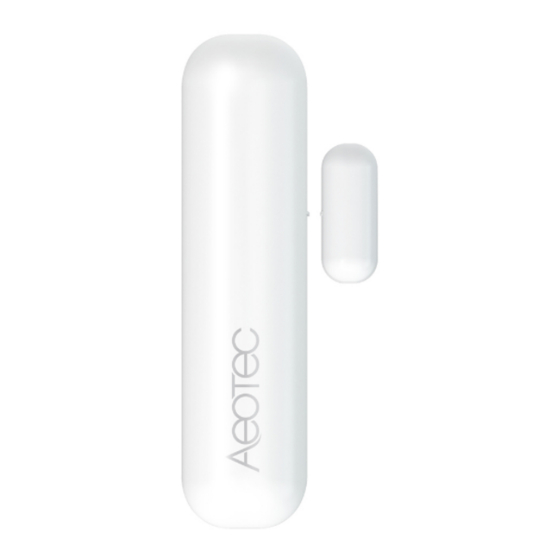
Table of Contents
Advertisement
Quick Links
Advertisement
Table of Contents

Summary of Contents for Z-Wave Aeotec 7 Pro
- Page 1 Door / Window Sensor 7 Pro...
-
Page 2: Quick Start
The DSK for the S2 inclusion can be found inside the sensors packaging. If your Z-Wave gateway supports SmartStart: scan the QR code on Door / Window Sensor 7 Pro using the gateway’s app. Your sensor will join your Z-Wave network automatically. -
Page 3: Prepare For Installation / Reset
Please read the user manual before installing the product. In order to include (add) a Z-Wave device to a network it must be in factory default state. Please make sure to reset the device into factory default. You can do this by performing an Exclusion operation as described below in the manual. -
Page 4: Product Usage
Inclusion/Exclusion On factory default the device does not belong to any Z-Wave network. The device needs to be added to an existing wireless network to communicate with the devices of this network. This process is called Inclusion. -
Page 5: Node Information Frame
Screw Terminal The product must support the interconnection of external binary sensors as well as actuators and dry-contacts. The product allows interconnection with external sensors/actuators via 3-pin screw terminals with the following pinout: Ground Digital Input VCC (direct battery supply) ... -
Page 6: Quick Troubleshooting
The Node Information Frame (NIF) is the business card of a Z-Wave device. It contains information about the device type and the technical capabilities. The inclusion and exclusion of the device is confirmed by sending out a Node Information Frame. Beside this it may be needed for certain network operations to send out a Node Information Frame. - Page 7 Z-Wave products are supposed to work out of the box after inclusion, however certain configuration can adapt the function better to user needs or unlock further enhanced features. IMPORTANT: Controllers may only allow configuring signed values. In order to set values in the range 128 ...
- Page 8 Parameter 5: Range Test after double click Allows to enable the activation of a Z-Wave range test. Double-clicking the tamper will start the process. As a result, the GREEN LED will blink two times in case of success and the RED LED will blink two times in case of failure.
- Page 9 Setting Description 0 - 99 Value Value Parameter 9: BASIC command value sent to 2nd Association Group on Off event This is the BASIC command value sent in case of Off event. Size: 1 Byte, Default Value: 0 Setting Description 0 - 99 Value Value...
- Page 10 This parameter enables/disables the central scene function. Size: 1 Byte, Default Value: 1 Setting Description Disabled Enabled Parameter 15: Tilt Sensor Functionality This parameter enables/disables the tilt function. Size: 1 Byte, Default Value: 1 Setting Description Disabled Enabled Parameter 16: Tilt Sensor State This parameter allows to set in what state is door/window when the tilt is in an OFF state.
- Page 11 On and Off Parameter 19: BASIC command value sent to 5th Association Group on On event This is the BASIC command value sent in case of On event. Size: 1 Byte, Default Value: 255 Setting Description 0 - 99 Value Value Parameter 20: BASIC command value sent to 5th Association Group on Off event This is the BASIC command value sent in case of Off event.
-
Page 12: Technical Data
Device Type Notification Sensor Generic Device Class Sensor Notification Specific Device Class Routing Sensor Notification Network Operation Reporting Sleeping Slave Firmware Version 02.00 Z-Wave Version 07.15 Z-Wave Product Id 0371.0002.000C Frequency Europe - 868,4 Mhz Maximum transmission 5 mW power... -
Page 13: Supported Command Classes
Controller — is a Z-Wave device with capabilities to manage the network. Controllers are typically Gateways, Remote Controls or battery operated wall controllers. Slave — is a Z-Wave device without capabilities to manage the network. Slaves can be sensors, actuators and even remote controls.

Need help?
Do you have a question about the Aeotec 7 Pro and is the answer not in the manual?
Questions and answers